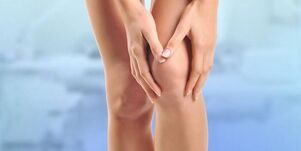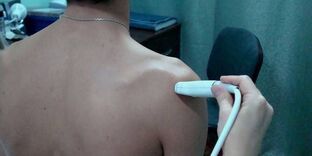Bone ligaments react very sensitively to intoxication of the body. Any infection or illness, nervousness and other factors can cause pain. Uncomfortable sensations in themselves still do not indicate the presence of any diseases in the body. It happens that the pain occurs as a result of injury or overload, while the discomfort manifests itself in the form of acute pain. What to do when the joints hurt, what are the reasons why the body hurts?
What is joint pain

In medical terms, joint pain is called arthralgia. It develops when the nerve endings located in the synovial sac are affected. Persistent pain is the first indicator of bone disease. This worsens the quality of life, the emotional background. Self-medication can lead to the transition of the disease into a chronic form, to even greater damage. The main symptom of arthralgia is the periodic foci of painful pain.
How the joints hurt
Pain is not a disease in itself, it is just a symptom of other diseases - both infectious and non-infectious. The perception of how diseased joints feel depends on the state of the nervous system. The balanced body practically does not react to slight discomfort, and the emotionally unstable has a low pain threshold. Pain in strength and duration can be characterized as follows:
- tolerant - unbearable;
- weak - strong;
- acute - chronic;
- common - rare;
- fast passing - long lasting.
If the joints hurt for more than a month, this is considered a chronic form. With proper treatment, it disappears for a while (remission stage), but then reappears (exacerbation stage). Joints can be provoked by a sharp drop in ambient temperature, physical overload, malnutrition, overweight and frequent stressful situations.
Why it hurts them
The causes of joint pain can be hidden in the ongoing pathological processes (stretching, inflammation, metabolic disorders). This is typical of diseases such as synovitis, arthritis, gout, osteoarthritis, etc. Various factors can provoke discomfort, through which you can determine the risk group:
- age over 50;
- genetic predisposition;
- congenital defects;
- chronic diseases;
- injuries;
- fractures;
- gender (women are affected more often);
- periods when a person becomes overweight.
Why do the joints in the limbs where there are connective tissues hurt? This may be due to impaired blood circulation in the synovium. Pain and stiffness of movements can also occur with an unbalanced diet. The diet should be rich in essential vitamins and minerals (calcium, phosphorus, boron). An inactive lifestyle is another reason why all joints hurt at the same time, from which a person suffers.
Why does the whole body and joints hurt
Pain in most joints of the body can have different origins. The most common cause is increased physical activity, after which you feel pleasant fatigue (ankle joint - sore feet when walking, shoulders). It can also happen in connection with:
- infections accompanied by fever (infectious arthritis, a virus that affects the hip joint);
- intestinal inflammation;
- disorders of the hematopoietic system;
- intoxication;
- autoimmune inflammatory processes;
- exacerbation of arthritis or osteoarthritis;
- rheumatism.
All joints and spine hurt
The main reason for this phenomenon is considered to be a malfunction in the cartilage metabolism. This is accompanied by a loss of smoothness, they become rough, lose synovial joint fluid and cracks form. The deformation process can be caused by the following reasons:
- sedentary lifestyle;
- professional sports;
- injuries;
- advanced infections, inflammatory diseases;
- hypothermia;
- stress;
- sudden jumps in body weight.
Knees and elbows
These parts of the body are made up of a junction of several bones (joints) covered with cartilage tissue. A characteristic lesion may be present on either side or simultaneously on two. The knees and elbows have little muscle and fat and are palpable. An experienced doctor can easily identify the cause of the disease (arthrosis of the knee joint, acute arthritis of the shoulder joints, rheumatoid arthritis, etc. ). It could be:
- chronic inflammation of the synovial canals;
- trauma;
- changes due to cartilage wear, joint deformity;
- systemic disease;
- obesity.
Diagnostics

In order for the rheumatologist to make the correct diagnosis and prescribe the appropriate treatment, an analysis of the painful symptoms that bother him is performed, diagnosis using all the necessary instrumental techniques. The nature of the pathology and its location are determined using:
- x-ray;
- ultrasound examination;
- tomography;
- arthroscopy;
- arthrocentesis;
- synovial fluid studies.
Treatment
The methods and ways of treating the joints are different for each case. They are divided into therapeutic (including surgery, massage, physiotherapy, exercise) and alternative (alternative methods of traditional medicine). What method of treatment to use for joint pain, the doctor decides after a thorough examination of the patient, taking into account his individual characteristics, the level of restriction of mobility.
Traditional treatment
This method aims to reduce inflammatory processes in the joint tissues and the joint membrane. Medications do not eliminate the problem, but only relieve the pain in the damaged joint cavity. For this purpose, use non-steroidal anti-inflammatory drugs NSAIDs (ointments, tablets, injections).
Traditional methods
Before using folk methods, you should definitely consult a doctor. The following methods are popular and effective:

- Bay leaf. To prepare the drug, you need 30 leaves, pour 0, 5 liters of boiling water, boil for 5 minutes. Infuse the resulting broth for 3 hours and start drinking for 12 hours. Repeat the procedure for 3 days, then take a break for 7 days. Repeat the course no more than 2 times a year.
- Gelatin. A compress should be made from this substance: a napkin is dipped in hot water, squeezed, soaked in gelatin, folded in layers and applied to the skin at night after wrapping with foil. It is useful to take gelatin internally.
- Rice. Boiled rice washes away the salts that can be identified by the characteristic crisis. First, it should be soaked in water - the longer, the better, periodically drain. The dish is consumed on an empty stomach, without salt, for 40 days.



































